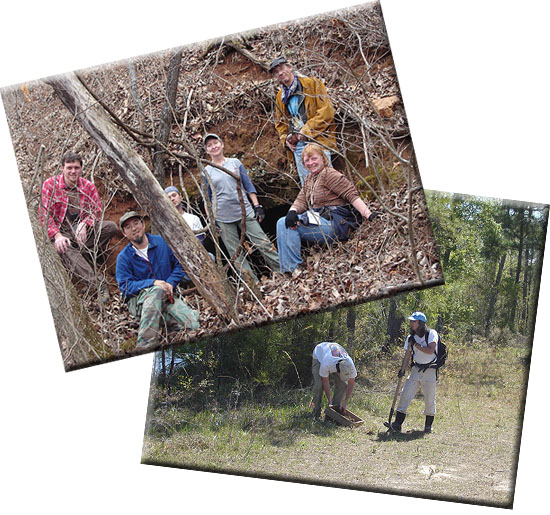
The primary objective of a Phase 1 cultural resources survey is to identify and record all cultural resources within a project area. Cultural resources can include prehistoric Native American habitation sites, historical farmstead sites, standing structures, or other man-made features such as earthworks, old roadbeds, or cemeteries.
Phase 1 investigations are the most common type of Cultural Resource Management (CRM) project, and generally consist of four tasks: (1) a literature and records search; (2) fieldwork; (3) laboratory analysis; and (4) report preparation.
The literature and records search identifies known historical and archaeological properties within or in the vicinity of the project area, and establishes a cultural context for understanding any possible cultural resources that might be affected by the project.
Phase 1 fieldwork usually consists of a visual, on-the-ground examination of the project area. It can be a cursory examination, as in a "red flag" or reconnaissance level survey, or it can be an intensive pedestrian survey with systematically excavated shovel tests and/or mechanically excavated exploratory trenches. If conditions are appropriate, geophysical techniques such as Ground Penetrating Radar or Earth Conductivity surveys can be included in Phase 1 investigations.
If artifacts or other materials are collected during a Phase 1 survey, they are usually transported to Weaver & Associates' laboratory in Memphis, where they are washed, labeled, analyzed, and prepared for curation according to State and Federal guidelines.
Once the data has been compiled, a professional report is prepared. In addition to the discussion of the site-specific findings, a review of the prehistory and history, environmental context, research orientation, and methods are usually included in the report.
When an archaeological site or historical property is encountered, sufficient information is presented to evaluate its potential eligibility for listing on the National Register of Historic Places, pursuant to criteria set forth in 36 CFR 60.4 . Phase 1 reports are generally submitted to the State Historic Preservation Officer (SHPO) and the Tribal Historic Preservation Officer (THPO) for review.







